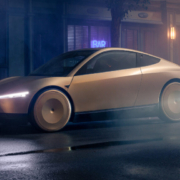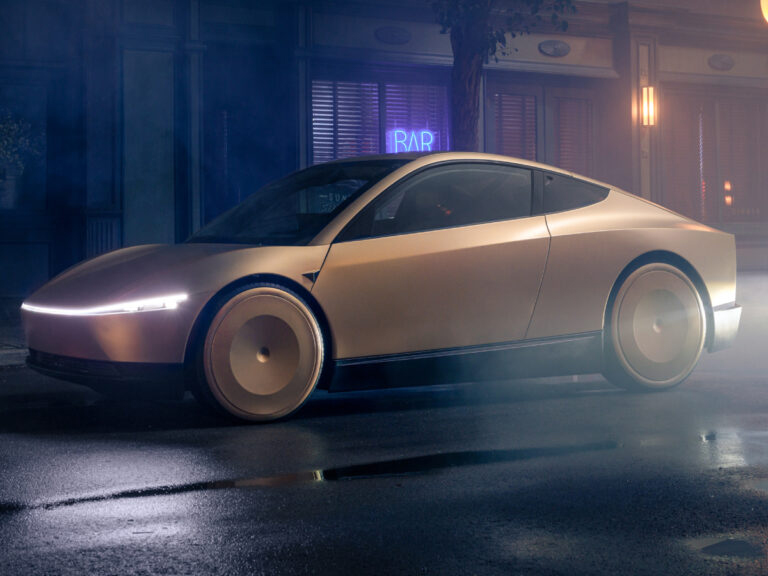Comprehensive Review of the Autonomous-Vehicle Industry in 2025: Current Status and Emerging Trends
Picture: Copyright©Tesla
- 2025 maturity of autonomous-driving technology
Artificial intelligence (AI) and sensors are rapidly advancing in the autonomous vehicle industry. Most driverless vehicles now rely on multi-sensor fusion—cameras, radar, and lidar. For instance, Tesla equips new cars with eight 5-megapixel cameras whose images are interpreted through deep-learning AI. Other makers, such as Waymo and Baidu Apollo, integrate lidar and millimeter-wave radar to improve long-range accuracy. The rapid advancements in solid-state lidar and 4D radar have led to significant cost declines, paving the way for large-scale production in commercial models.
AI decision systems: The heart of autonomy is the end-to-end deep learning algorithm. Tesla’s latest FSD V13 already includes reverse driving and is trained on NVIDIA’s Dojo supercomputer; the system learns how human drivers act in every situation and produces human-like decisions. The next generation of AI models—large-scale autonomous-driving networks—will merge multimodal sensing (speech, gaze, and posture) with 3D virtual-scene simulation, further enhancing precision and adaptability.
Chips and computing power: Demand for automotive semiconductors is soaring. An advanced self-driving car may integrate hundreds or even thousands of chips, and its computing load far exceeds that of a smartphone. The global automotive chip market reached approximately US$72.6 billion in 2023 and is projected to reach US$146.7 billion by 2034. Key players—NVIDIA, Qualcomm, Intel Mobileye, Samsung, and China’s Huawei—are expanding fast. NVIDIA has built an end-to-end ecosystem with GPUs for cloud training and Orin/Drive platforms in vehicles. Mobileye holds more than 70 percent of the L2 ADAS market with its EyeQ chips and is developing an L4 platform. Chinese suppliers, such as Black Sesame and Horizon Robotics, are launching the next generation of automotive System-on-Chip (SoC) devices; by 2025, the competitive landscape is expected to be primarily established.
The potential of large-scale autonomy is fascinating. It hinges on massive labeled data and simulation. China’s autonomous driving market is expected to reach roughly RMB 450 billion in 2025, and technical progress depends on massive, high-quality datasets. Firms collect, clean, and label data through on-road mileage, closed-loop simulation scenes, and digital twins. Development is moving toward vehicle–cloud collaboration—on-board sensing paired with cloud computing—and the Chinese government is actively building vehicle–road–cloud infrastructure. The combination of 5G/V2X networks and high-definition mapping platforms has also become essential, giving vehicles real-time traffic updates and supporting edge computing and remote monitoring.
- Commercial applications
Robotaxis and shuttle buses. Driverless taxis are the main thrust of commercialization. Waymo (Google) offers driverless rides in Arizona and San Francisco; Cruise (GM) runs a limited service in San Francisco; Motional and Lyft have begun trials in Las Vegas. In China, Baidu’s Apollo Go operates in Beijing, Guangzhou, and Chongqing; Pony.ai serves Beijing and Guangzhou; AutoX is running tests in Guangzhou and with Ford. Tesla plans to launch a Robotaxi service with 10–20 Model Y cars in Austin, Texas, in June 2025. Analysts expect that by 2035, 40–80 cities—mainly in China and the United States—will host large-scale Robotaxi fleets. Two operating models are emerging: self-operated fleets (Tesla buys its vehicles and gathers data) and collaborative fleets, in which technology firms, automakers, and ride-hailing platforms share roles (for example, SAIC, Xiangdao, Momenta, Cruise, GM, Lyft).
Urban logistics and autonomous trucks. Driverless delivery vehicles and inspection carts are being piloted in many countries. In the United States, Nuro’s small delivery bots serve neighborhoods, while long-haul truck startups such as TuSimple and Aurora target fixed routes. Reports put the United States in front for driverless trucking, with uncrewed trucks expected to claim a sizeable share of new sales on fixed routes by 2035. Europe lags due to cross-border regulations and high costs. In China, firms such as Baidu and China Post have begun pilot runs of uncrewed trucks, and some logistics parks now use driverless delivery vehicles. These businesses emphasize cost-effectiveness and reliability, with a focus on highways and industrial zones.
Closed or dedicated venues, Such as Airports, factories, campuses, and exhibition grounds, often deploy autonomous minibusses or patrol vehicles. Such controlled environments carry lower technical hurdles and serve as testbeds—for example, Japanese driverless minibusses in rural towns. Driverless logistics vehicles are also used in ports and mines to raise efficiency. These projects commonly integrate 5G networks and smart-traffic infrastructure, providing quick routes to commercial use in specific settings.
Private vehicles: Most new private cars now ship with L2 or L2-plus driver assistance (lane-keeping, adaptive cruise, etc.). By 2023, L2 penetration in new Chinese cars had topped 47 percent. L3 automation remains in its early stages due to cost, regulation, and safety concerns; only a few models, such as Mercedes-Benz’s Drive Pilot, certified in Germany, allow drivers to remove their hands under defined motorway conditions. Tesla’s FSD Beta is available in some markets but still needs driver supervision. In the short term, private-car autonomy will remain mainly in the assisted-driving phase, with conditional Level 3 (L3) expected to spread gradually toward 2030, albeit in modest numbers.
- Policy and regulatory landscape
United States. As of 2025, US rules are still state-based. California’s AB1777 requires at least US$5 million in insurance for testing; states such as Texas and Nevada are more lenient. Federally, the Department of Transportation issued an Automated Vehicle Framework in April 2025, easing some safety demands and expanding exemption programs. The transport secretary advocates a single national standard and streamlined procedures. The NHTSA has simplified accident report rules and exemption requests, aiming to expedite the commercial rollout under federal leadership.
Europe: The region adheres to UNECE standards, with national updates. In March 2025, UNECE amended Regulation 171 to allow supervised automatic lane changes on motorways. The Czech Republic passed a new law, effective January 2026, permitting advanced FSD in defined scenarios with no driver liability before handover. Britain’s 2024 Automated Vehicles Act defines the autonomous vehicle entity and the “responsible user,” paving the way for commercial services from 2026. Norway, in April 2025, authorized two years of public road testing of Tesla’s Full Self-Driving (FSD) system under supervision. The EU is cautious but gradually opening, emphasizing safety and liability; legislative progress varies from country to country.
China allows city-level pilots first. Beijing approved the Mercedes-Benz L3 at the end of 2023; meanwhile, Shenzhen, Guangzhou, and Wuhan are developing smart roads and unmanned services. Shenzhen’s 2022 regulations set entry levels and liability rules. China is working on national standards and responsibility mechanisms while issuing numerous road-test licenses. Its strategy is government-led and incremental: it starts with city pilots, then aligns with national norms to drive commercialization under controlled safety conditions.





